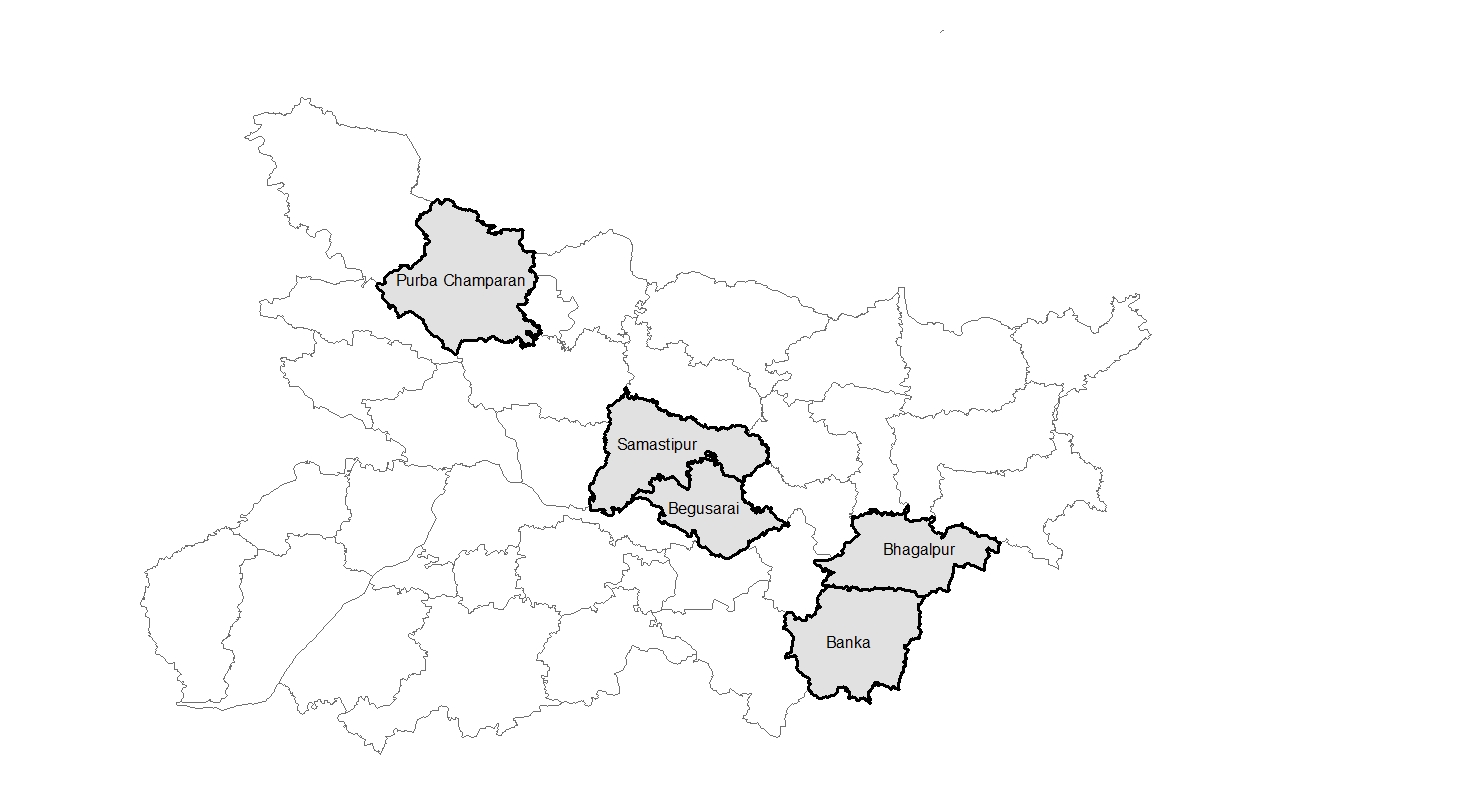The ADM Institute Postharvest Loss Prevention project is based in the state of Bihar in India. Bihar is one of the poorest states in India with an annual per capita income of around USD 250. Majority of the population in Bihar is rural and around 90 percent of the cropped area is under food grains (rice, wheat, maize). In a randomized control design, we work with 4000 farmers in 80 villages of 5 districts of Bihar. Around 83 percent of the farmers in the region are smallholders and own less than 1 hectare of farmland.

Goals of the Project
The ADM Institute Postharvest Loss Prevention project in Bihar, India aims to improve postharvest technology and management of grain quality among smallholder farmers to improve agricultural incomes, household welfare and food security. On-farm volume losses reduce the quantity of grain available for sale and consumption. Value losses in grain quality due to improper postharvest management result in low market prices, loss of nutritional value, food safety and health risks. We use a combination of randomized control trials, physical and survey measurements to evaluate PHL technology and estimate economic value of reducing PHL. Preliminary estimates show that farmers in Bihar are potentially losing up to US$23.7 per hectare (~10% of average per capita income) due to PHL.
Four significant characteristics differentiate this research from previous studies examining postharvest losses in India.
- Sub-optimal postharvest management leads to potential negative outcomes for farmers not only through physical quantity losses but also from value lost due to poor grain quality characteristics. Most studies have focused only on characterizing the physical losses along the postharvest supply chain. This research goes a step further and offers an assessment of the economic value lost to smallholder farmer attributable to postharvest management of grains.
- We recognize that understanding postharvest technology adoption and the resulting value to farmers needs to account for behavioral and contextual factors. Competing forces ranging from the farmers’ characteristics, village market conditions that determine incentives for grain quality, government policies affecting the grain market and other contextual factors mediate postharvest practices among farmers as well as their welfare outcomes.
- The study design also lets us examine the factors affecting technology adoption among farmers, and how that adoption changes other postharvest behavior. This approach will help formulate specific programs for postharvest technology and practices that take advantage of driving factors and alleviate barriers that may exist.
- We also examine the health costs of poor postharvest management and improper storage techniques that compromise the food safety standards and result in widespread aflatoxin contamination of food grains.

Project Interventions
We use a randomized control design to evaluate the impact of providing either PHL technology, information or both to farmers in Bihar. Using an auction design, we provide farmers GrainPro hermetically sealed bags to examine the impact of storage behavior, storage duration, grain quality, grain prices and food safety measures.
- Demonstration and training of farmers on PHL issues in villages
- 2500 subsidized hermetic grain storage bags (based on willingness to pay) distributed across 44 villages in 5 districts and 1500 free bags in 32 villages
- Information intervention for 1100 farmers in 22 villages on aflatoxin contamination, health risks and safe storage practices to minimize contamination
- Testing of grain samples for aflatoxin in collaboration with IFPRI and ICRISAT
- Demonstration of STR dryers on local university campuses (RAU and BAU) and in the ADMI village
- Measuring traders’ and end-users’ preferences for various grain quality attributes so that PHL grain improvements match market demand
- Measuring health implications for farmers with visible symptoms of aflatoxicosis
Preliminary Findings
- Using a field experiment, we estimate farmers are willing to pay an average US$0.40 per bag, more than three times what they currently spend on traditional jute bags ($0.12 per bag)
- The demand increased by more than 20% when additional health and food safety information was provided
- We find a high level of demand even from landless and marginal farmers
- Demand is driven largely by need to store for home food consumption
- Farmers using hermetic bags report a large decline in incidence of rodent, fungus and pest damage
- 14% reduction in storage losses when using hermetic bags
- 19% increase in likelihood of storing grain for food consumption
- The bags also reduce the need for hazardous fumigants used during storage
- Overall, 72% of farmers reported being highly satisfied with hermetic bags and 62% report they would recommend the bags to their peers
- None of the farmers were aware of the risks of mycotoxins in grains in baseline
- Initial aflatoxin tests of farmers’ stored grain reveal high incidence of contamination: 36% in traditional bags tested positive, while none of the samples stored in hermetic bags had any aflatoxin contamination
- Also impacts prices received in the markets – farmers receive low prices because many high-value buyers such as large feed manufacturers and exporters may refuse to procure due to food safety risks
Project Status: Ongoing